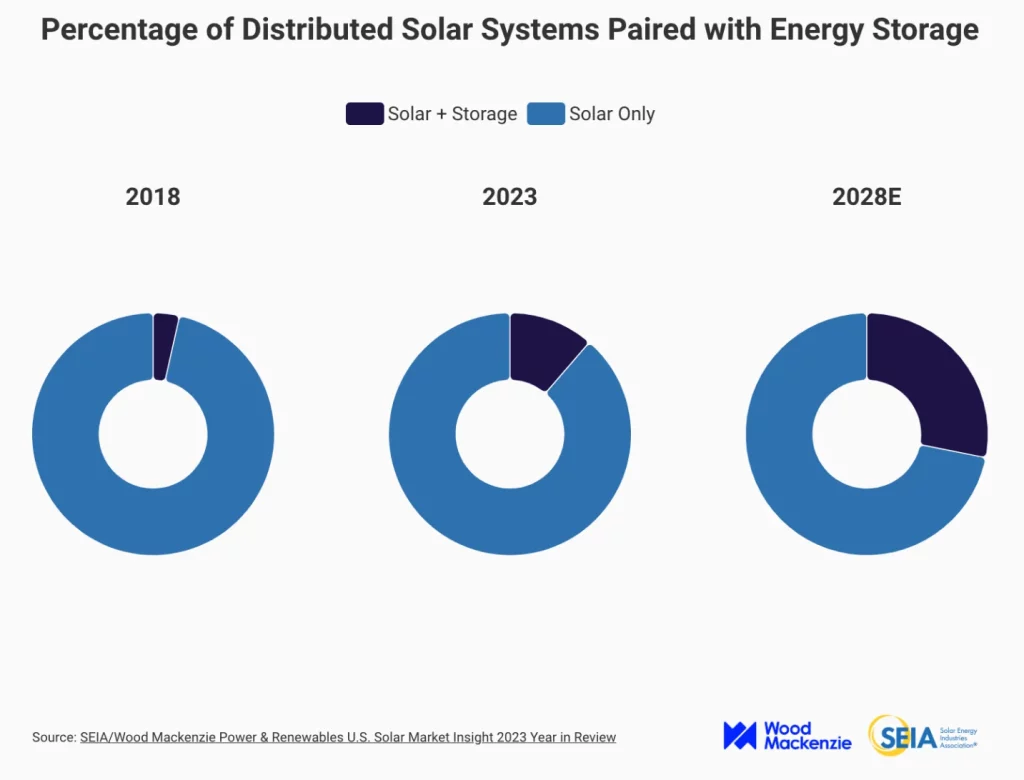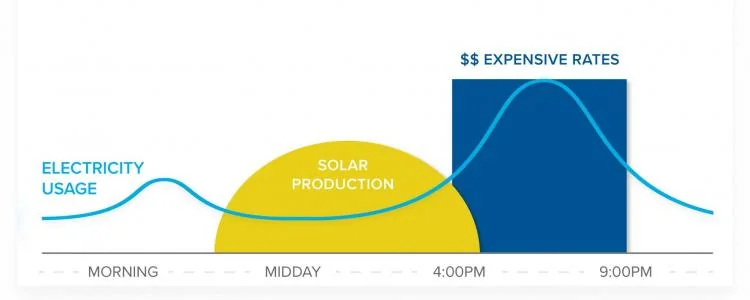Solar energy value propositions are changing as net metering programs evolve in the United States.
To remain in business, solar companies must innovate alongside industry trends to continuously create value for customers with new selling points, product offerings, and guidance on utility bill savings.
This article explores several ways PV systems can create value beyond net metering credits. We also discuss how to prepare your business for long-term success in the competitive and changing solar energy marketplace.
The value of solar beyond net metering credits
In 2024, dozens of states will maintain traditional net metering laws. However, mature markets, like California, Arizona, and Hawaii, have switched to net billing models with significantly lower solar export credit values.
While 1-to-1 net metering policies have traditionally made it easy for PV installers to demonstrate system payback directly against utility bill spending, net billing tariffs (NBT) require them to demonstrate the value of a solar energy system beyond energy credits alone.
1. Sustainability and control with battery storage
First, before discussing the financial incentives for solar beyond net metering, it is important to consider that saving money is not the only reason people install PV systems today. As a sustainable power source, solar can provide greater energy independence and resilience with integrated battery storage, giving system owners more control over how and when they can access their electricity.

Image source: SEIA
With the frequency and severity of extreme weather events rising worldwide, solar panel and storage systems can provide tremendous value to your customers with sustained power access throughout local grid outages. Outside of grid outages, batteries can also help your customers better control their energy consumption sources, accessing the solar power generated on-site long after sunlight hours.
2. Demand response (DR) programs
Emerging throughout the country, demand response (DR) programs incentivize solar battery owners to discharge stored electricity to the grid during peak local energy demand. While the sophistication and details of programs vary, many emerging DR incentives include rebates or cash payments for homeowners who install grid-tied battery storage and participate in energy-sharing events.
For example, Mass Save program participants can earn up to $1,375 annually while voluntarily exporting solar power to the grid during peak energy demand hours from 3:00 p.m. and 8:00 p.m. between June 1 and September 30.
3. Time-variable pricing (TVP)
Also known as time-of-use (TOU), time-variable pricing (TVP) is a utility billing mechanism that prices electricity rates based on local energy supply and demand. In areas with net metering, TVP may be applied to energy imports and exports, with variable electricity prices and compensation rates throughout the day for using grid energy or sharing solar power.

Image source: Sunrun
When talking to potential customers, you can demonstrate how solar batteries help shift loads throughout the day to avoid expensive utility rates and maintain the lowest possible ongoing electricity costs. By tapping into stored electricity outside of solar-producing hours or sharing excess energy with the grid when it is most valuable, your educated customers can achieve the most long-term savings with smart energy habits and systems.
4. Community solar options
When rooftop panels are not an option for whatever circumstance, you may be able to connect customers with off-site community solar projects that offer “virtual” net metering (VNM) or power purchase agreement (PPA) programs.
While not available everywhere in the U.S., community solar projects are active in over 40 states, with approximately three-fourths of all shared PV capacity found in Florida, New York, Massachusetts, and Minnesota.

Image source: Vote Solar
By pooling resources into large, off-site energy systems, community solar projects can enable potential savings where traditional net metering or net billing is not worth it for individuals or organizations looking to reduce electricity costs.
Although community solar gardens can be more challenging to get started than the average home installation (considering upfront costs, permitting, and scale), there are also fewer barriers to entry for potential participants. While every project is different, shared installations can help expand your businesses to serve apartment dwellers, renters, and a wide range of new customers.
How to sell solar beyond net metering
By staying informed and up to date on the details of net metering and related programs in your service area, you can establish yourself as a local expert in any solar sales scenario. Whenever a new policy or incentive is approved, such as net billing or a demand response battery rebate, it is important to be aware of deadlines and encourage customers to act while programs are still available.
In areas without net metering, offering solar storage is essential to help customers maximize bill savings, increase energy security, and integrate with smart grid systems. While selling solar batteries, it is important to equip personnel with the tools necessary to design efficient systems and generate accurate savings forecasts through load shifting or participation in local incentive programs.
Flexibility can also be a key to success in remaining ahead of the competition. For your business to stand out, actively listening to your customers and making sales proposal adjustments incrementally and on-the-fly can help your solutions better align with the shifting sentiments of solar energy value across different markets.
While storage integration increases the price of an energy system, offering easy financing programs is also essential in the modern solar marketplace to help customers overcome high upfront costs with multiple options from trusted partners.
Change beyond net metering in action
After NEM 3.0 replaced traditional net metering in California, the Golden State solar market immediately began to experience tremendous change. One year after the update, a Berkeley Lab Report found that residential solar battery storage attachment rates rose from 10% up to 60% state-wide.
In the same year, third-party ownership (TPO) rates for California solar installations rose from 24% to 44% under net billing, reversing a downward trend away from TPO models. Though this growth may be partially attributed to high interest rates, it is also a good example of how the industry may be shifting in multiple directions.
Recap and looking ahead
In short, there is hope for the solar energy industry beyond net metering. By embracing new financial models, innovating your business, and educating customers on how to squeeze the most value out of their energy system, you can stay competitive in the evolving solar energy marketplace, no matter what changes lie ahead.
Solargraf is an industry-leading software trusted by global PV developers. From intuitive design tools to accurate savings projections and permitting assistance, Solargraf has many features to increase operational efficiency, adapt to industry evolution, and grow your solar business.


 United States
United States Germany/Austria
Germany/Austria Brazil
Brazil Netherlands
Netherlands